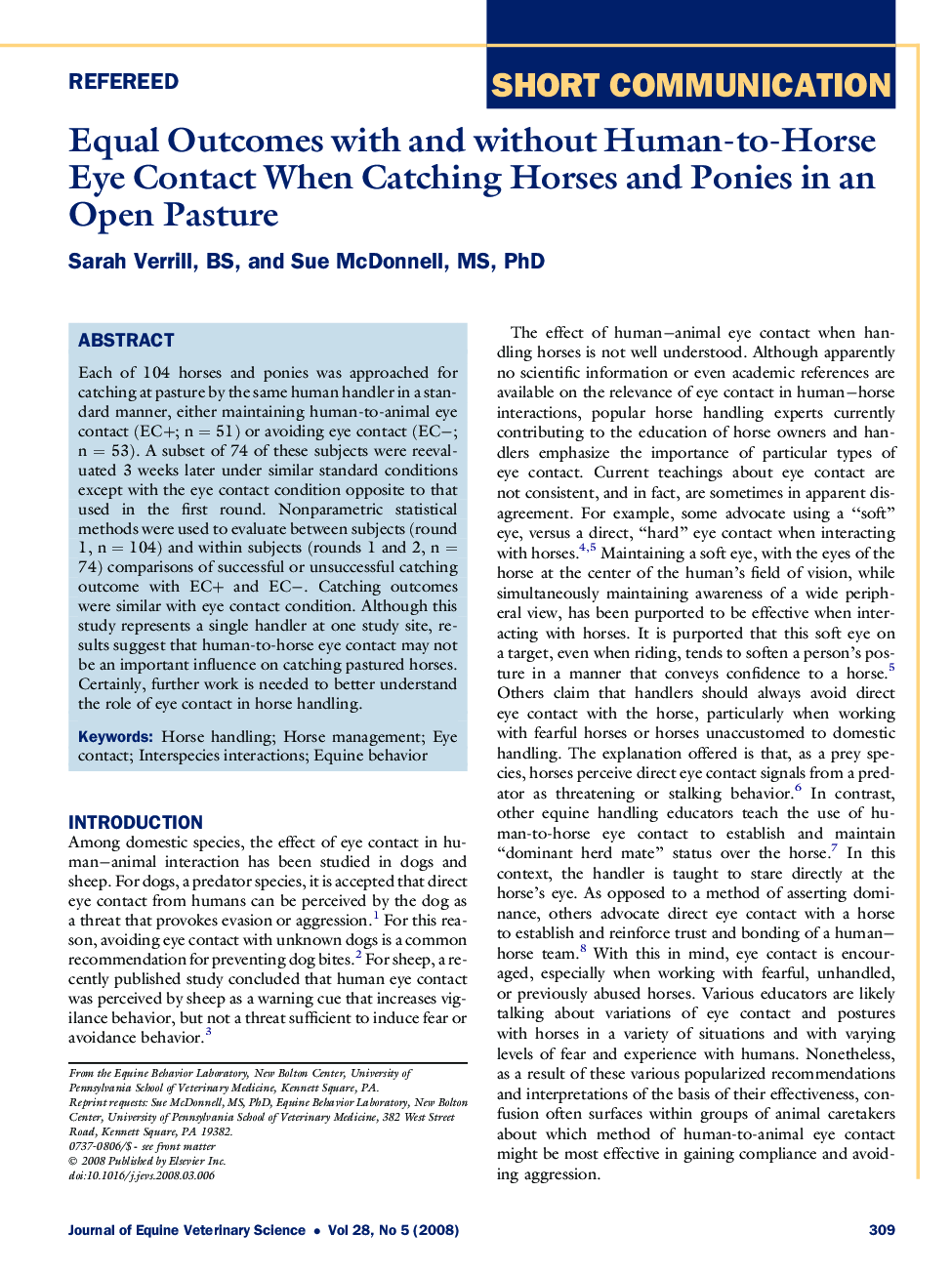| Article ID | Journal | Published Year | Pages | File Type |
|---|---|---|---|---|
| 2396246 | Journal of Equine Veterinary Science | 2008 | 4 Pages |
Each of 104 horses and ponies was approached for catching at pasture by the same human handler in a standard manner, either maintaining human-to-animal eye contact (EC+; n = 51) or avoiding eye contact (EC−; n = 53). A subset of 74 of these subjects were reevaluated 3 weeks later under similar standard conditions except with the eye contact condition opposite to that used in the first round. Nonparametric statistical methods were used to evaluate between subjects (round 1, n = 104) and within subjects (rounds 1 and 2, n = 74) comparisons of successful or unsuccessful catching outcome with EC+ and EC−. Catching outcomes were similar with eye contact condition. Although this study represents a single handler at one study site, results suggest that human-to-horse eye contact may not be an important influence on catching pastured horses. Certainly, further work is needed to better understand the role of eye contact in horse handling.
